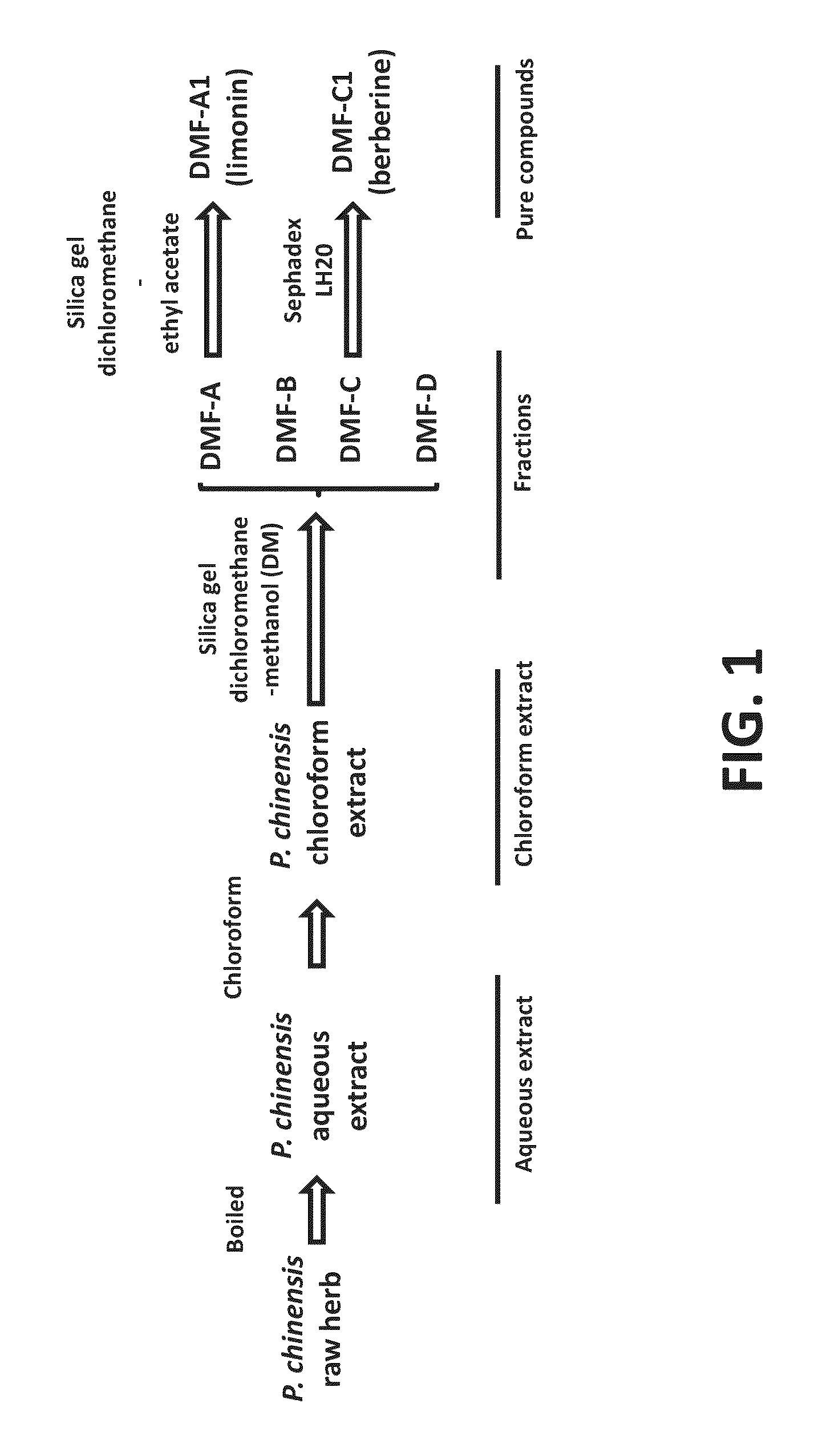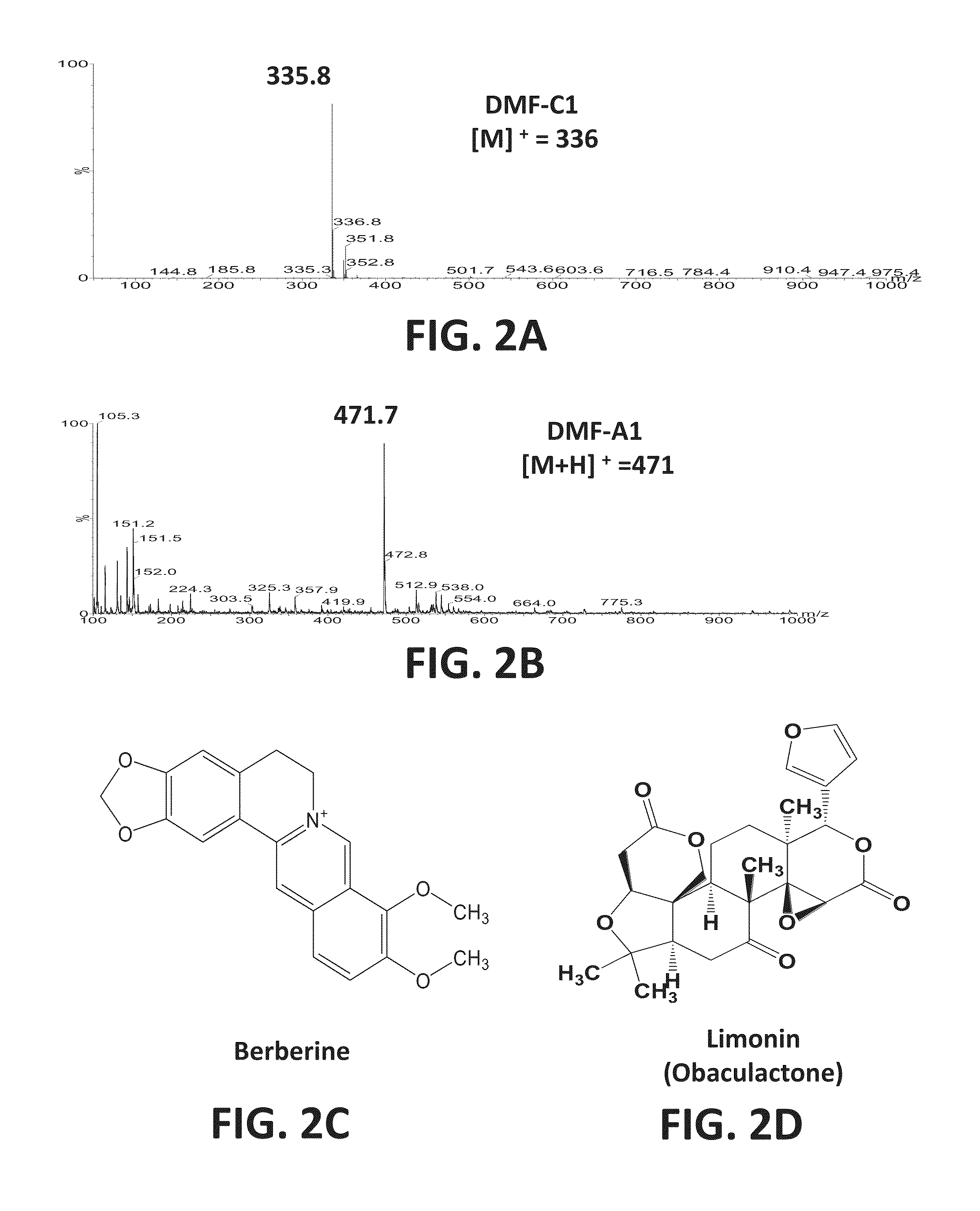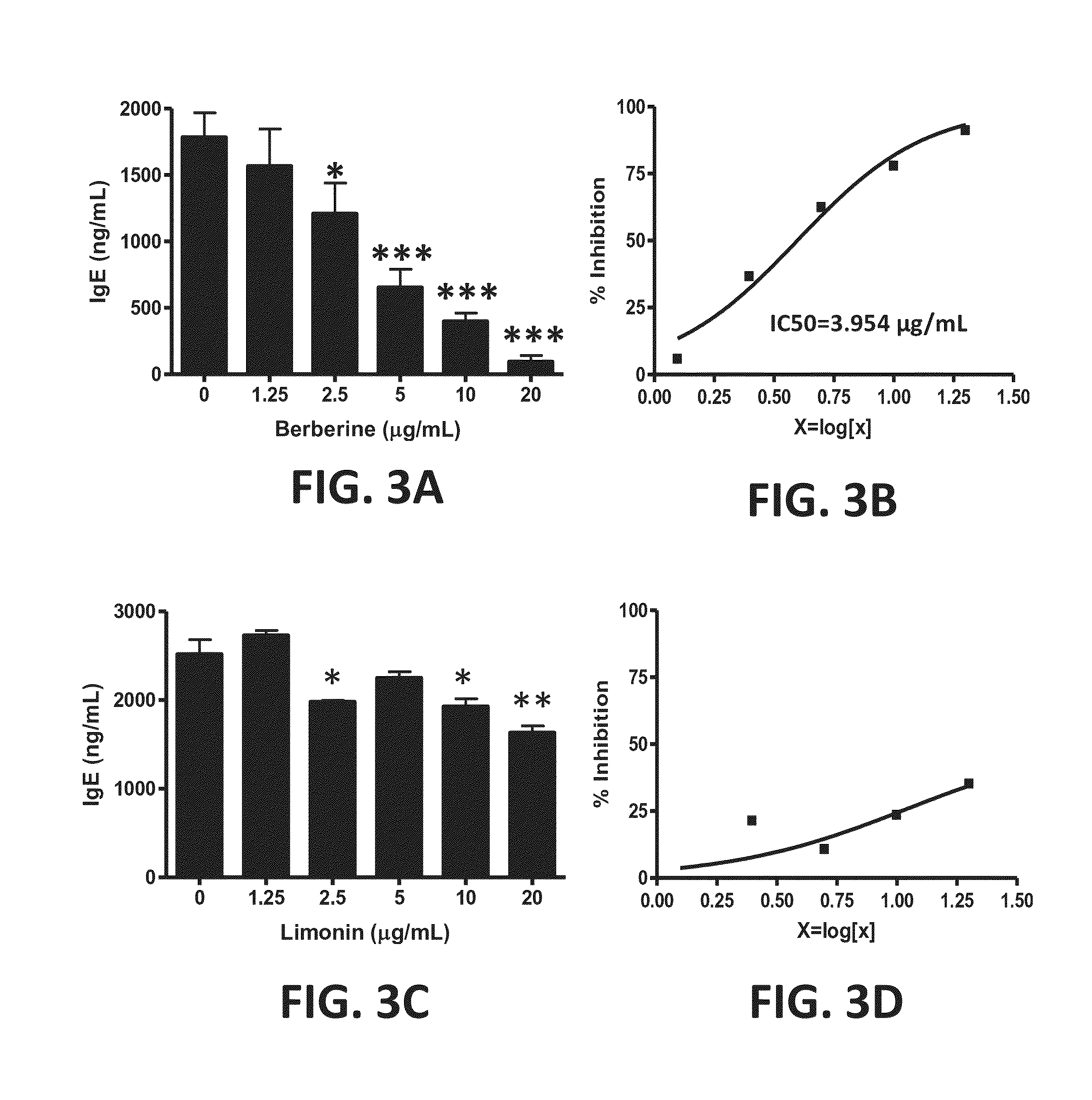Supression of ige production by compounds derived from traditional chinese medicine
a technology of ige and compound, which is applied in the direction of heterocyclic compound active ingredients, biochemical apparatus and processes, biocide, etc., can solve the problems of anaphylactoid reactions, high cost of omalizumab therapy, and potential life-threatening reactions, so as to suppress ige production, inhibit ige production, and suppress ige production
- Summary
- Abstract
- Description
- Claims
- Application Information
AI Technical Summary
Benefits of technology
Problems solved by technology
Method used
Image
Examples
example 1
Methods
Materials
FAHF-2, B-FAHF-2 and Individual Herb Extracts
[0117]In order to identify individual pharmaceutically active compounds effective for modulating food allergy and other allergen mediated physiological responses, we used as our starting material FAHF-2 and B-FAHF-2. FAHF-2 and B-FAHF-2 are mixtures of herbs used in traditional Chinese medicine and have been previously shown effective at treating food allergies, and in particular, peanut allergies. See U.S. Pat. No. 7,820,175 hereby incorporated by reference.
[0118]As previously described, FAHF-2 is a dried aqueous extract of 9 herbs purified with ethanol. It is produced in a GMP-certified facility (Xiyuan Chinese Medicine Research and Pharmaceutical Manufacturer, Beijing China) and stored at room temperature. All herbs used for manufacture were of Chinese origin. The quality of the raw herbs was established according to the standards of the Pharmacopoeia of People's Republic of China as previous described. Based on organol...
example 2
[0146]Berberine cream 3B significantly inhibited the histamine release after peanut challenge in the mouse model (FIG. 27).
[0147]Berberine cream 3B suppressed the anaphylactic response. Berberine cream 3B treatment showed protection of peanut allergic mice from anaphylactic reaction. The berberine cream 3B treated mice showed lower anaphylaxis symptom score (FIG. 28).
example 3
Methods
[0148]Berberine Uptake In Vitro and In Vivo Experiments:
[0149]Cell Culture:
[0150]Experiments were performed on 24 well plates for berberine uptake assay. CACO-2 cells were seeded in each well at the concentration of 1×105 cells / well. Cells were then allowed to grow to confluence and differentiation for 2 weeks in culture medium (DMEM+10% FBS, high glucose and sodium pyruvate and supplemented with 1% Essential Amino Acids). On the experiment day, cells were washed three times with pre-warmed HBSS and incubated with 1 ml warm HBSS for 30 minutes.
[0151]After conditioning with HBSS, cells were incubated at 37° C. with 50 μg / mL berberine with or without 250 μg / mL of nine different herbal medicines, fruits of Prunus mume (P. mume), skin of the fruits of Zanthoxylum schinifolium (Z. schinifolium), roots of Angelica sinensis (A. sinensis), rhizome of Zingiber officinalis (Z. officinalis), twigs of Cinnamomum cassia (C. cassia), bark of Phellodendron chinensis (P. chinensis), rhizome ...
PUM
 Login to View More
Login to View More Abstract
Description
Claims
Application Information
 Login to View More
Login to View More - R&D
- Intellectual Property
- Life Sciences
- Materials
- Tech Scout
- Unparalleled Data Quality
- Higher Quality Content
- 60% Fewer Hallucinations
Browse by: Latest US Patents, China's latest patents, Technical Efficacy Thesaurus, Application Domain, Technology Topic, Popular Technical Reports.
© 2025 PatSnap. All rights reserved.Legal|Privacy policy|Modern Slavery Act Transparency Statement|Sitemap|About US| Contact US: help@patsnap.com



